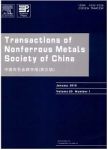Formation of interfacial brittle phases sigma phase and IMC in hybrid titanium-to-stainless steel joint
Formation of interfacial brittle phases sigma phase and IMC in hybrid titanium-to-stainless steel joint作者机构:Nuclear Materials Research Division Korea Atomic Energy Research Institute Daejeon 305-353 Korea
出 版 物:《Transactions of Nonferrous Metals Society of China》 (中国有色金属学报(英文版))
年 卷 期:2011年第21卷第A01期
页 面:7-11页
核心收录:
学科分类:080503[工学-材料加工工程] 08[工学] 080502[工学-材料学] 0805[工学-材料科学与工程(可授工学、理学学位)] 0802[工学-机械工程] 080201[工学-机械制造及其自动化]
基 金:supported by the Korea Atomic Energy Research Institute (KAERI) R&D Program
主 题:brazing titanium stainless steel intermetallic compounds (IMCs)
摘 要:The microstructures of the brazed joints for commercially pure Ti and stainless steel were investigated by the applications of various filler alloys including Ag-, Ti-, Zr- and Ni-based alloys. Generally, the dissimilar joints between Ti and stainless steel were dominated by the Ti-based intermetallic compounds (IMCs), e.g. (Ti, Zr)2(Fe, Ni), TiFe, TiCu, and Ti2(Fe, Ni), due to a significant dissolution of Ti from the base metal. The (Fe-Cr) cr phase was also observed near the stainless steel due to a segregation of Cr into the interface region. This research demonstrates empirically that the brittleness of the Ti and stainless steel joint can not be avoided only by applying single braze alloy or single insert metal, and thus an introduction of additional suitable interlayer between the filler alloy and the base metal is necessary to prevent the brittleness of the joint.




